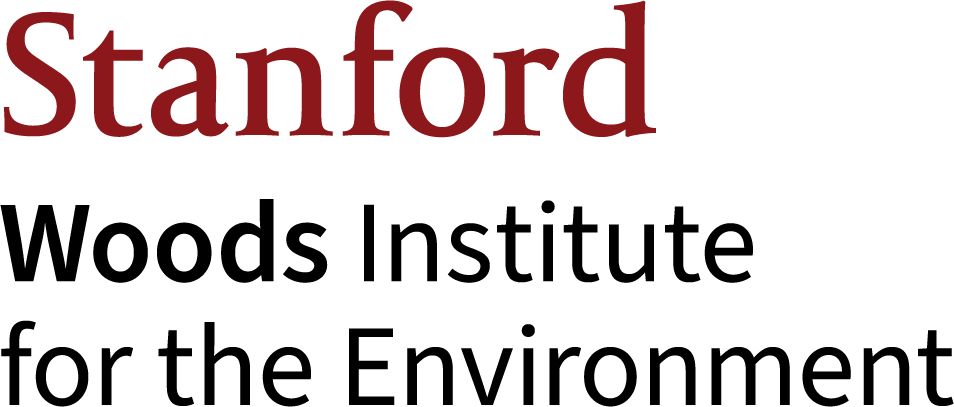History
Different Disciplines, Common Goals
In 2003, Stanford’s 10th President, John Hennessy, announced the creation of a new interdisciplinary institute for the environment – an independent center designed to serve as an umbrella organization for environmental research and education at Stanford University.
“Some of our most daunting challenges are environmental ones,” he said at the time. “How can we build a world that supports sustainable development for our “children’s children’s children?”
For years that question had been driving a grassroots movement on campus led by a group of Stanford faculty members doing research related to the environment. They studied very different fields – agriculture, biology, earth sciences, economics, engineering and law – but they shared a common understanding: modern environmental challenges require multidisciplinary solutions. Working with university leaders, this group envisioned a hub for interdisciplinary research with implications for real-world policy solutions.
Their vision began to take shape at the Environmental Forum, an interdisciplinary faculty colloquium started by Roz Naylor in 1992. Meeting on Thursdays twice a month allowed the scholars to learn more about about their colleagues’ research while considering how to harness Stanford’s deep and diverse strengths in the environmental field. In 1995, the Provost office called on these faculty members to form the Provost’s Committee for Environmental Science, Policy, and Technology, charged with evaluating the benefits of integrating environmental research on campus.
Soon their collaborations grew into the Center for Environmental Science and Policy (CESP),*, established at the Freeman Spogli Institute for International Studies in 1998 by Falcon and former university President Donald Kennedy. Among this grassroots faculty effort’s early achievements: establishing Stanford’s Earth Systems Program, the Goldman Honors Program undergraduate project-focused seminar series, the Emmett Interdisciplinary Program in Environment and Resources (E-IPER) and the online Stanford Environmental Portal.
A major shift took place in 2000 when John Hennessy became president of Stanford and announced plans to assess 21st century priorities for university investment. That year the Provost’s Committee produced a report calling for a "major initiative" to make Stanford "a national leader in providing solutions for environmental problems," resulting in the 2003 formation of the campus-wide Initiative on Environment and Sustainability.
“The mission of the initiative is to promote an environmentally sound and sustainable world by identifying current and future environmental problems and challenges," Provostial Committee member PeterVitousek said in a presentation to the Faculty Senate. "We will develop creative solutions to these challenges through the integration of science, technology and policy – and effectively communicate our findings beyond Stanford."
Vitousek and his fellow committee members created a blueprint for collaboration between faculty and staff from various schools within the university. As the initiative’s centerpiece, Hennessy created the Stanford Institute for the Environment and appointed professors Buzz Thompson and Jeff Koseff its founding faculty directors.
Visionary supporters helped the Institute grow quickly. Many of these early donors would later form the Institute’s advisory council. In 2006, the Institute was formally renamed for Stanford trustee Ward W. Woods, ’64, and his wife, Priscilla, whose significant contribution supports innovative environmental programs and collaborative research.
* While CESP was dissolved in 2007, many of its programs were incorporated into the Woods Institute and most of its core faculty continued as senior fellows at the Woods Institute for the Environment, which became the primary hub for campus-wide interdisciplinary environmental research and teaching. Several faculty members retained dual positions as senior fellows at both the Woods and Freeman Spogli institutes.
A Hub for Environmental Research
Since then, the Ward W. and Priscilla B. Woods Institute for the Environment has grown to become the primary hub for interdisciplinary environmental and sustainability research at Stanford. With faculty from each of the campus’ seven schools, the institute’s reach is global, encompassing projects and research on every continent except Antarctica. Its budget has grown from about $1 million to about $20 million and its community has grown from a handful of committed faculty to more than 250 fellows, affiliated faculty, researchers and administrative staff.
The Institute’s size and scope has expanded considerably over the years to include research and education in seven focal areas: climate, conservation, food security, freshwater, natural capital, oceans, public health and sustainability.
The institute’s affiliated faculty and scholars are involved with dozens of projects around the world. Their research has led to the development of biodegradable building materials, paradigm-changing wastewater treatment technology, fire-prevention products, and new government policies for drinking water access in Sub-Saharan Africa. The institute’s programs have informed significant new policy developments such as a landmark groundwater law in California, and an agreement between hydropower and conservation interests that paved the way to significant funding allocations in 2021 U.S. infrastructure legislation.
Educational courses seminars and workshops offered through the Institute have inspired and better prepared hundreds of current and emerging environmental leaders.
Woods has more than realized the hopes of its founding faculty members, Thompson and Koseff agreed.
“The Woods Institute is doing exactly what we set out to do –finding creative new interdisciplinary solutions to the world’s major environmental challenges and preparing the next generation of environmental leaders,” Thompson said.
“The Stanford Woods Institute has shown how an academic institution can tap into the talents and time of faculty without requiring that they move to new departments, change their affiliations or otherwise reorganize the university,” added Koseff. “This new framework for working across disciplines allows faculty to focus on solutions. It’s really altered the landscape of higher learning, pioneering new ways of appointing faculty, reassessing what scholarship deserves support and redefining what universities are about.”

